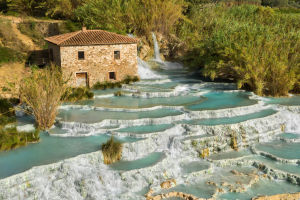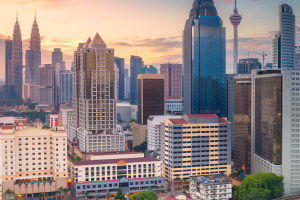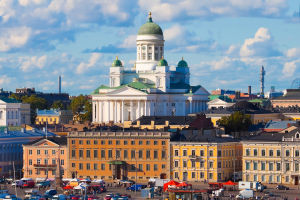Lykkers, prepare for a sensory journey through some of the world's most breathtaking blooming landscapes.
From vibrant lavender in France to golden sunflowers in Italy and wild desert blossoms in South Africa, this guide will walk you through where to go, what to expect, and how to experience these colorful miracles of nature firsthand.
Lavender Fields of Valensole, France
Located in southeastern France, the Valensole Plateau in Provence is a wide, sun-soaked area famous for its rolling lavender fields.
Best Time to Visit:
Late June to mid-August is the peak season, with most fields blooming beautifully in early July. Harvest typically starts mid-July, depending on the weather.
What to See and Do:
Capture postcard-worthy photos, stroll through fragrant fields, and visit small shops selling lavender-infused goods. Lavender-themed festivals take place in early July in nearby villages.
How to Get There:
Fly into Marseille or Nice, then rent a car or take a scenic train ride to Manosque or Aix-en-Provence. From there, buses or private transfers will get you to Valensole.
Opening Hours and Costs:
The fields are free to visit, though guided tours and museum entries (such as lavender farms) range from €6 to €10.
Accommodation and Average Price:
Charming countryside B&Bs or agriturismos are available from €75 to €120 per night. Booking early is recommended in peak season.
Sunflower Fields in Tuscany, Italy
Found in central Italy, particularly around Cortona (Arezzo), the Val d'Orcia, and Maremma areas such as Alberese.
Best Time to Visit:
Mid-July is ideal for seeing endless rows of sunflowers in full bloom.
What to See and Do:
Enjoy countryside drives, take panoramic photos, and combine your trip with visits to nearby medieval towns and natural parks.
How to Get There:
From Florence or Rome, take a train to Arezzo or Grosseto, then rent a car for full access to rural roads.
Opening Hours and Costs:
Open countryside — no ticket required. Some farms may offer small workshops or tours from €5 to €15.
Accommodation and Average Price:
Farm stays and villas range between €80 and €150 per night, often offering homemade meals and garden views.
Wildflower Spectacle in Castelluccio di Norcia, Umbria
This natural event takes place in the high plains of Castelluccio, within the Sibillini Mountains National Park.
Best Time to Visit:
From late June through early July, expect a floral tapestry of lentils, mustard, and cornflowers.
What to See and Do:
Hike the surrounding trails, take panoramic photos, or explore the historic village. A local festival is often organized to celebrate the blooming season.
How to Get There:
Reach Norcia by bus or car from Perugia, then continue via local routes to Castelluccio. Car access is recommended due to limited public transport.
Opening Hours and Costs:
Open to the public, though access may be regulated on busy weekends. Parking and shuttle systems may cost €5–10.
Accommodation and Average Price:
Mountain lodges and agriturismos cost from €60 to €110 per night. Early reservations are advised during blooming season.
Succulent Blossoms in Namaqualand, South Africa
Situated along the west coast between South Africa and Namibia, Namaqualand transforms during the southern winter.
Best Time to Visit:
Late August to early September is the blooming window following winter rains.
What to See and Do:
Admire diverse succulent species, take guided botanical tours, and explore nearby nature reserves like Skilpad Wildflower Reserve.
How to Get There:
Fly to Cape Town, then drive or take a guided tour (approximately 5–6 hours) north to Namaqualand.
Opening Hours and Costs:
Flower routes are open daily. Entry to specific reserves such as Namaqua National Park costs around €3–5.
Accommodation and Average Price:
Lodges and eco-campsites cost from €40 to €90 per night. Advanced booking is essential during the bloom.
To Summarize
Each of these destinations promises a unique celebration of color, nature, and serenity. Lykkers looking to combine photography, culture, and peaceful landscapes will find these spots ideal for summer travel. With just the right timing and a touch of planning, witnessing these natural wonders in full bloom becomes a truly unforgettable experience.


